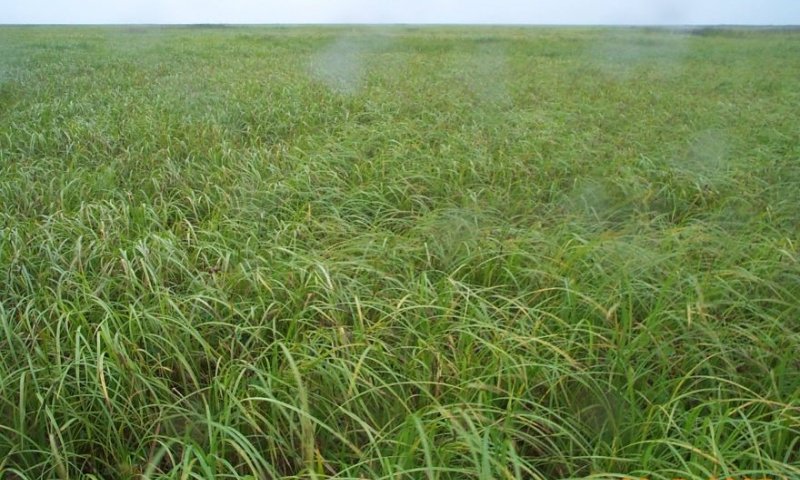

Natural Resources
Conservation Service
Ecological site R236XY133AK
Subarctic Graminoid Loamy Tidal Coastal Plains
Last updated: 2/13/2024
Accessed: 12/22/2025
General information
Provisional. A provisional ecological site description has undergone quality control and quality assurance review. It contains a working state and transition model and enough information to identify the ecological site.
MLRA notes
Major Land Resource Area (MLRA): 236X–Bristol Bay-Northern Alaska Peninsula Lowlands
The Bristol Bay-Northern Alaska Peninsula Lowland Major Land Resource Area (MLRA 236) is located in Western Alaska. This MLRA covers approximately 19,500 square miles and is defined by an expanse of nearly level to rolling lowlands, uplands and low to moderate hills bordered by long, mountain footslopes. Major rivers include the Egegik, Mulchatna, Naknek, Nushagak, and Wood River. MLRA 236 is in the zone of discontinuous permafrost. It is primarily in areas with finer textured soils on terraces, rolling uplands and footslopes. This MLRA was glaciated during the early to middle Pleistocene. Moraine and glaciofluvial deposits cover around sixty percent of the MLRA. Alluvium and coastal deposits make up a large portion of the remaining area (Kautz et al., 2012; USDA, 2006).
Climate patterns across this MLRA shift as one moves away from the coast. A maritime climate is prominent along the coast, while continental weather, commonly associated with Interior Alaska, is more influential inland. Across the MLRA, summers are general short and warm while winters are long and cold. Mean annual precipitation is 13 to 50 inches, with increased precipitation at higher elevations and areas away from the coast. Mean annual temperatures is between 30 and 36 degrees F (USDA, 2006).
The Bristol Bay-Northern Alaska Peninsula MLRA is principally undeveloped wilderness. Federally managed land includes parts of the Katmai and Aniakchak National Parks, and the Alaska Peninsula, Becharof, Togiak and Alaska Maritime National Wildlife Refuges. The MLRA is sparsely populated. Principal communities include Dillingham, Naknek, and King Salmon. Commercial fishing in Bristol Bay and the Bering Sea comprises a major part of economic activity in the MLRA. Other land uses include subsistence activities (fishing, hunting, and gathering) and sport hunting and fishing (USDA, 2006).
Classification relationships
Alaska Vegetation Classification:
Mesic graminoid herbaceous (III.A.2 - level III) / Bluejoint-herb community (III.A.2.b - level IV)
(Viereck et al., 1992)
Ecological site concept
This ecological site is on linear tidal flats of the coastal plain shore complex. Site elevation is between sea level to 30 feet. Slopes are nearly level. Site and soil hydrology are the major influencers of vegetation on this site. Soils are poorly drained and a water table is present throughout the growing season. Flooding from tidal events and storms introduce salt and brackish water to this site, significantly influencing the vegetation here.
The reference state supports two communities. The reference plant community is characterized as mesic graminoid herbaceous meadow (Viereck et al., 1992). It is composed of one or more grass species with mixed forbs throughout. Microtopographic lows and areas closest to the sea are generally wetter than the reference state, and supports primarily obligate wetland species tolerant to higher salt concentrations.
Associated sites
| R236XY129AK |
Subarctic Low Scrub Peat Coastal Plains Both sites are part of the coastal plain shore complex. R236XY129AK describes scrub marshes associated with organic Histosols. Those scrub marshes typically have water at the surface. R236XY133AK supports primarily herbaceous species on minimally developed silt loam Entisols. |
|---|
Similar sites
| R236XY135AK |
Western Alaska Maritime Scrub Loamy Plains, Coastal Both sites are part of the coastal plain and support large populations of herbaceous species. R236XY135AK is better drained and only has a water table at the beginning of the growing season. It supports willows, which are not present in R236XY133AK. |
|---|
Table 1. Dominant plant species
| Tree |
Not specified |
|---|---|
| Shrub |
Not specified |
| Herbaceous |
(1) Calamagrostis canadensis |
Click on box and path labels to scroll to the respective text.
Ecosystem states
State 1 submodel, plant communities
| 1.1A | - | Raised water table, decreased drainage |
|---|---|---|
| 1.2A | - | Lowered water table, increased drainage |



